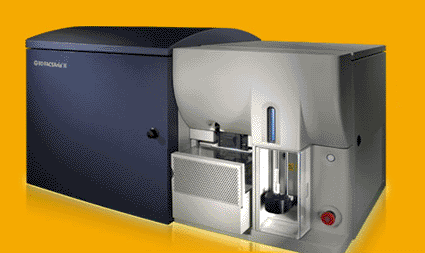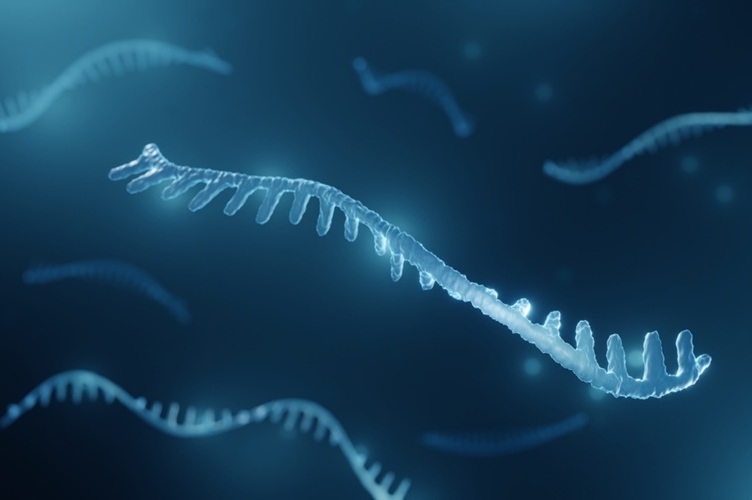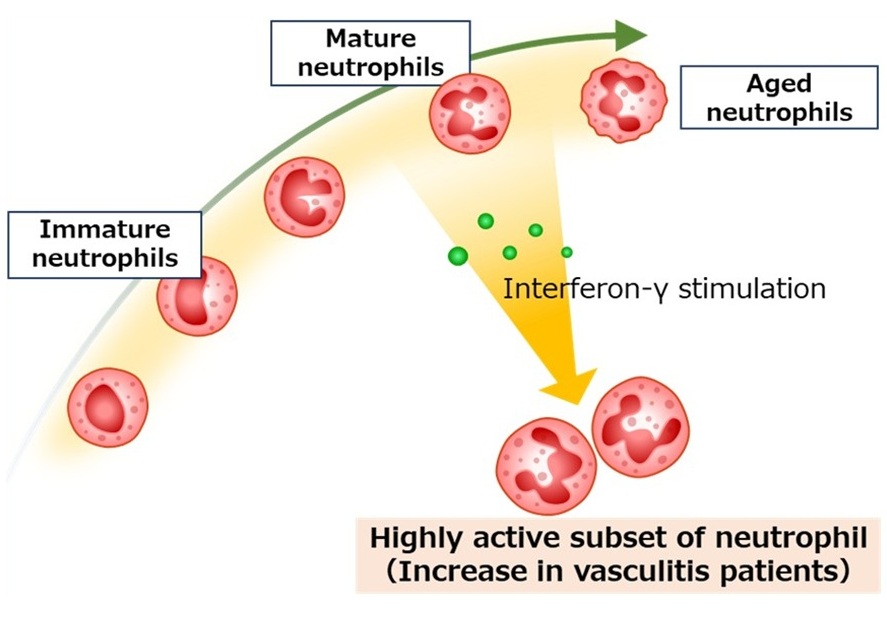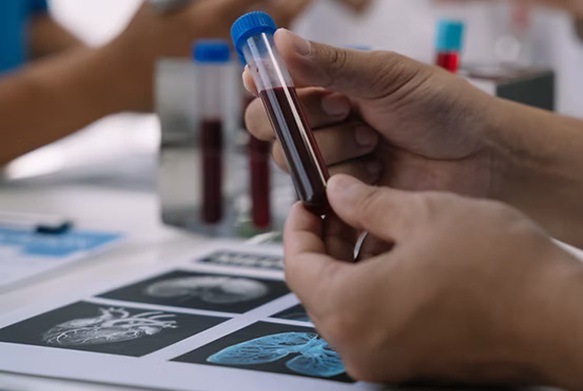Flow Cytometry System Makes Cell Sorting Easier and More Accessible
|
By Labmedica staff writers Posted on 31 Jan 2008 |

Image: The BD FACSAria II cell-sorting system, designed for consistent results in sorting across a broad range of applications (Photo courtesy of BD Biosciences).
A high-performance flow cytometry system makes cell sorting easier and more accessible to scientists working across a wide range of applications from diagnostics to pure scientific research.
The first generation BD FACSAria system, which was developed in 2003, brought cell sorting to a broader audience of scientists. The next generation high-performance cell sorter, which was launched in January 2008, is the BD FACSAria II flow cytometry system. It features a number of improvements, which were designed across the system to make BD FACSAria II easier to use and more productive.
The BD FACSAria design is based on a true fixed-alignment flow cell that is gel-coupled to the collection optics. This design minimizes startup time, improves experiment-to-experiment reproducibility, and increases the sensitivity and resolution needed for multicolor applications. BD Biosciences (San Jose, CA, USA), the company that designed and manufactures the cell sorters, offers consulting and support services for technical and application needs and compatible, state-of-the-art instruments, as well as a full line of assays and reagents.
The BD FACSAria II incorporates a new fluidics design that improves aseptic setup and cleaning. New nozzle sizes enable a wide range of particles to be sorted and new nozzle design allows for reproducible insertions. Software wizards and automation simplify aseptic sort setup, drop delay determination, and clog detection.
The new model cell sorter improves both workflow and productivity with improvements across the platform. For example, a universal sort tube collection mount now makes it easier to insert and remove tube holders. In addition, software improvements dramatically cut the time spent on cytometer setup, adjustment, and maintenance.
For aerosol management the BD FACSAria II features a sealed pathway from the sample injection chamber to the sort collection tubes. The BD aerosol management option (AMO) evacuates the sort collection chamber and traps aerosolized particles during sorting.
The sample is introduced via the sample injection chamber into the flow cytometer. During acquisition, the chamber is pressurized, forcing the sample to the cuvette flow cell. Sample injection chamber temperature control and agitation are standard with the BD FACSAria II cell sorter. The BD FACSDiva software controls both sample agitation and temperature settings. It also automates quality control and experiment setup.
The 375-nm near ultra violet (UV) laser option is available to expand the range of application choices. The beam geometry is optimized for most hematopoietic stem cells. The top hat design of the 375 nm near UV laser triples the amount of light at the sample intercept. The 375 nm near UV laser can be operated together with the red and blue lasers.
For many users, the capability of an advanced cell sorter is defined by its flexibility, which in turn is defined by the number of parameters that can be detected simultaneously. To provide maximum flexibility, the BD FACSAria II cell sorter can be configured with up to four air-cooled, solid state lasers and can detect up to 15 parameters simultaneously--13 fluorescent markers and two scatter parameters when fully equipped.
The current BD FACSAria cell sorter is field-upgradeable to the BD FACSAria II cell sorter.
Related Links:
BD Biosciences
The first generation BD FACSAria system, which was developed in 2003, brought cell sorting to a broader audience of scientists. The next generation high-performance cell sorter, which was launched in January 2008, is the BD FACSAria II flow cytometry system. It features a number of improvements, which were designed across the system to make BD FACSAria II easier to use and more productive.
The BD FACSAria design is based on a true fixed-alignment flow cell that is gel-coupled to the collection optics. This design minimizes startup time, improves experiment-to-experiment reproducibility, and increases the sensitivity and resolution needed for multicolor applications. BD Biosciences (San Jose, CA, USA), the company that designed and manufactures the cell sorters, offers consulting and support services for technical and application needs and compatible, state-of-the-art instruments, as well as a full line of assays and reagents.
The BD FACSAria II incorporates a new fluidics design that improves aseptic setup and cleaning. New nozzle sizes enable a wide range of particles to be sorted and new nozzle design allows for reproducible insertions. Software wizards and automation simplify aseptic sort setup, drop delay determination, and clog detection.
The new model cell sorter improves both workflow and productivity with improvements across the platform. For example, a universal sort tube collection mount now makes it easier to insert and remove tube holders. In addition, software improvements dramatically cut the time spent on cytometer setup, adjustment, and maintenance.
For aerosol management the BD FACSAria II features a sealed pathway from the sample injection chamber to the sort collection tubes. The BD aerosol management option (AMO) evacuates the sort collection chamber and traps aerosolized particles during sorting.
The sample is introduced via the sample injection chamber into the flow cytometer. During acquisition, the chamber is pressurized, forcing the sample to the cuvette flow cell. Sample injection chamber temperature control and agitation are standard with the BD FACSAria II cell sorter. The BD FACSDiva software controls both sample agitation and temperature settings. It also automates quality control and experiment setup.
The 375-nm near ultra violet (UV) laser option is available to expand the range of application choices. The beam geometry is optimized for most hematopoietic stem cells. The top hat design of the 375 nm near UV laser triples the amount of light at the sample intercept. The 375 nm near UV laser can be operated together with the red and blue lasers.
For many users, the capability of an advanced cell sorter is defined by its flexibility, which in turn is defined by the number of parameters that can be detected simultaneously. To provide maximum flexibility, the BD FACSAria II cell sorter can be configured with up to four air-cooled, solid state lasers and can detect up to 15 parameters simultaneously--13 fluorescent markers and two scatter parameters when fully equipped.
The current BD FACSAria cell sorter is field-upgradeable to the BD FACSAria II cell sorter.
Related Links:
BD Biosciences
Latest Technology News
- Disposable Microchip Technology Could Selectively Detect HIV in Whole Blood Samples
- Pain-On-A-Chip Microfluidic Device Determines Types of Chronic Pain from Blood Samples
- Innovative, Label-Free Ratiometric Fluorosensor Enables More Sensitive Viral RNA Detection
- Smartphones Could Diagnose Diseases Using Infrared Scans
- Novel Sensor Technology to Enable Early Diagnoses of Metabolic and Cardiovascular Disorders
- 3D Printing Breakthrough Enables Large Scale Development of Tiny Microfluidic Devices
- POC Paper-Based Sensor Platform to Transform Cardiac Diagnostics
- Study Explores Impact of POC Testing on Future of Diagnostics
- Low-Cost, Fast Response Sensor Enables Early and Accurate Detection of Lung Cancer
- Nanotechnology For Cervical Cancer Diagnosis Could Replace Invasive Pap Smears
- Lab-On-Chip Platform to Expedite Cancer Diagnoses
- Biosensing Platform Simultaneously Detects Vitamin C and SARS-CoV-2
- New Lens Method Analyzes Tears for Early Disease Detection
- FET-Based Sensors Pave Way for Portable Diagnostic Devices Capable of Detecting Multiple Diseases
- Paper-Based Biosensor System to Detect Glucose Using Sweat Could Revolutionize Diabetes Management
- First AI-Powered Blood Test Identifies Patients in Earliest Stage of Breast Cancer
Channels
Clinical Chemistry
view channel
‘Brilliantly Luminous’ Nanoscale Chemical Tool to Improve Disease Detection
Thousands of commercially available glowing molecules known as fluorophores are commonly used in medical imaging, disease detection, biomarker tagging, and chemical analysis. They are also integral in... Read more
Low-Cost Portable Screening Test to Transform Kidney Disease Detection
Millions of individuals suffer from kidney disease, which often remains undiagnosed until it has reached a critical stage. This silent epidemic not only diminishes the quality of life for those affected... Read more
New Method Uses Pulsed Infrared Light to Find Cancer's 'Fingerprints' In Blood Plasma
Cancer diagnoses have traditionally relied on invasive or time-consuming procedures like tissue biopsies. Now, new research published in ACS Central Science introduces a method that utilizes pulsed infrared... Read moreMolecular Diagnostics
view channel
Simple Blood Test Better Predicts Heart Disease Risk
Cardiovascular diseases (CVDs) are the primary cause of death worldwide. A large proportion of these cases could be prevented by addressing lifestyle and environmental factors such as smoking, poor diet,... Read more
New Blood Test Detects 12 Common Cancers Before Symptoms Appear
Bowel cancer is the fourth most common cancer in the UK, with over 42,000 new diagnoses each year. Detecting bowel cancer in its early stages can be challenging, and as the disease progresses, survival... Read moreHematology
view channel
New Scoring System Predicts Risk of Developing Cancer from Common Blood Disorder
Clonal cytopenia of undetermined significance (CCUS) is a blood disorder commonly found in older adults, characterized by mutations in blood cells and a low blood count, but without any obvious cause or... Read more
Non-Invasive Prenatal Test for Fetal RhD Status Demonstrates 100% Accuracy
In the United States, approximately 15% of pregnant individuals are RhD-negative. However, in about 40% of these cases, the fetus is also RhD-negative, making the administration of RhoGAM unnecessary.... Read moreImmunology
view channel
Stem Cell Test Predicts Treatment Outcome for Patients with Platinum-Resistant Ovarian Cancer
Epithelial ovarian cancer frequently responds to chemotherapy initially, but eventually, the tumor develops resistance to the therapy, leading to regrowth. This resistance is partially due to the activation... Read more
Machine Learning-Enabled Blood Test Predicts Immunotherapy Response in Lymphoma Patients
Chimeric antigen receptor (CAR) T-cell therapy has emerged as one of the most promising recent developments in the treatment of blood cancers. However, over half of non-Hodgkin lymphoma (NHL) patients... Read moreMicrobiology
view channel
Handheld Device Delivers Low-Cost TB Results in Less Than One Hour
Tuberculosis (TB) remains the deadliest infectious disease globally, affecting an estimated 10 million people annually. In 2021, about 4.2 million TB cases went undiagnosed or unreported, mainly due to... Read more
New AI-Based Method Improves Diagnosis of Drug-Resistant Infections
Drug-resistant infections, particularly those caused by deadly bacteria like tuberculosis and staphylococcus, are rapidly emerging as a global health emergency. These infections are more difficult to treat,... Read more
Breakthrough Diagnostic Technology Identifies Bacterial Infections with Almost 100% Accuracy within Three Hours
Rapid and precise identification of pathogenic microbes in patient samples is essential for the effective treatment of acute infectious diseases, such as sepsis. The fluorescence in situ hybridization... Read morePathology
view channel
Sensitive and Specific DUB Enzyme Assay Kits Require Minimal Setup Without Substrate Preparation
Ubiquitination and deubiquitination are two important physiological processes in the ubiquitin-proteasome system, responsible for protein degradation in cells. Deubiquitinating (DUB) enzymes contain around... Read more
World’s First AI Model for Thyroid Cancer Diagnosis Achieves Over 90% Accuracy
Thyroid cancer is one of the most common cancers worldwide, and its precise management typically relies on two primary systems: (1) the 8th edition of the American Joint Committee on Cancer (AJCC) or ... Read more
Breakthrough Diagnostic Approach to Significantly Improve TB Detection
Tuberculosis (TB) remains the deadliest infectious disease globally, with 10.8 million new cases and 1.25 million deaths reported in 2023. Early detection through effective screening is crucial in identifying... Read more
Rapid, Ultra-Sensitive, PCR-Free Detection Method Makes Genetic Analysis More Accessible
Genetic testing has been an important method for detecting infectious diseases, diagnosing early-stage cancer, ensuring food safety, and analyzing environmental DNA. For a long time, polymerase chain reaction... Read moreIndustry
view channel
Cepheid and Oxford Nanopore Technologies Partner on Advancing Automated Sequencing-Based Solutions
Cepheid (Sunnyvale, CA, USA), a leading molecular diagnostics company, and Oxford Nanopore Technologies (Oxford, UK), the company behind a new generation of sequencing-based molecular analysis technologies,... Read more
Grifols and Tecan’s IBL Collaborate on Advanced Biomarker Panels
Grifols (Barcelona, Spain), one of the world’s leading producers of plasma-derived medicines and innovative diagnostic solutions, is expanding its offer in clinical diagnostics through a strategic partnership... Read more







 Assay.jpg)












